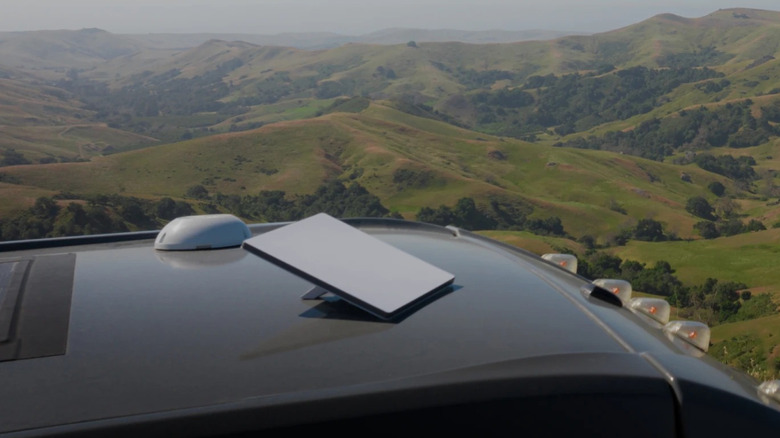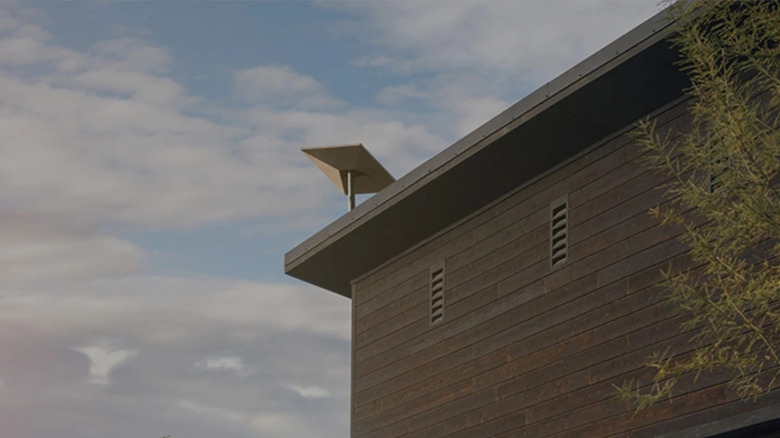How To Safely Clean A Starlink Dish (And Products To Avoid)
Like other satellite internet providers, Starlink is designed to be installed outdoors for better connection to the satellites. Given how Starlink works and the required installation location, your equipment is bound to get dirty over time. This is especially true if you get frequent dust storms in your area, live close to busy dirt roads, and maybe even experience a lot of bird droppings.
Lucky for you, the dish is known to clean itself when it rains. It has a pure Teflon surface, which helps the rainwater easily rinse off any debris and dirt from the dish. But what if you don't get enough rain throughout the year? Or if the dirt buildup is more than the rain can keep up with? Or if you get debris that can't be easily washed away? In such cases, you may have to pull out your cleaning tools and start cleaning your Starlink dish. But what tools do you need and how do you clean it safely?
Cleaning the Starlink's dish
With how pricey Starlink hardware is, it's only natural to be extra cautious when cleaning it, especially the dish. The last thing you want to do is damage the equipment and go days without internet while waiting for a replacement. Fortunately, keeping your Starlink looking like new isn't exactly rocket science. There are no fancy tools required — just grab a microfiber cloth and your glass cleaner of choice (like Windex), and you're all set. However, Starlink recommends avoiding water repellant sprays like RainX and NeverWet since the dish material itself is already hydrophobic.
Here's the step-by-step guide on how to safely clean your Starlink dish:
- Turn off the Starlink by unplugging the power and ethernet cables.
- Use your hands to gently pry off any accumulated solid debris like icicles, twigs, and dirt clumps on the dish. Avoid sharp tools, such as screwdrivers or utility knives.
- Spray some glass cleaner on your microfiber towel. Don't use abrasive cloths on the Starlink dish as they can potentially damage it.
- Wipe the dish with the damp towel until you get all of the dirt off.
- Plug the cables back.
Alternatively, you can hose down your Starlink dish with a low-pressure spray that mimics your typical rainfall. This should generally be okay as Starlink's IP rating for the dish (at least for the Standard, Mini, and Enterprise) is IP67, which means it can withstand temporary water immersion. The IP rating for the other dishes is a bit lower: the Standard Actuated is IP54 and the Flat High Performance is IP56. If you're only cleaning a snow-covered dish, though, you might just want to use the built-in Snow Melt feature to do the work for you.
What happens if you don't clean your Starlink dish?
Most users haven't had to clean their Starlink dish since the day they installed it, all thanks to the pure Teflon material that makes the dish slippery enough for plain rainwater to wash away the dirt. However, in areas with little rainfall, dirt can easily build up. What happens to your Starlink if you don't clean it then?
For some, a small amount of buildup like clumps of bird droppings has no significant effect on the system's performance since the obstruction map doesn't register it as a problem. But if the buildup starts covering larger parts of the dish, it could show up as an obstruction and mess with your signal. This could eventually slow down your internet speed. If the entire face is covered, perhaps by snow or stuck leaves, you might even lose service entirely. This is one of the big disadvantages of Starlink internet over wired connection.
Apart from the impact on performance, you'll also be dealing with aesthetics if you don't clean your Starlink dish. It won't be the nicest thing to look at when dirty, especially since it's white.


